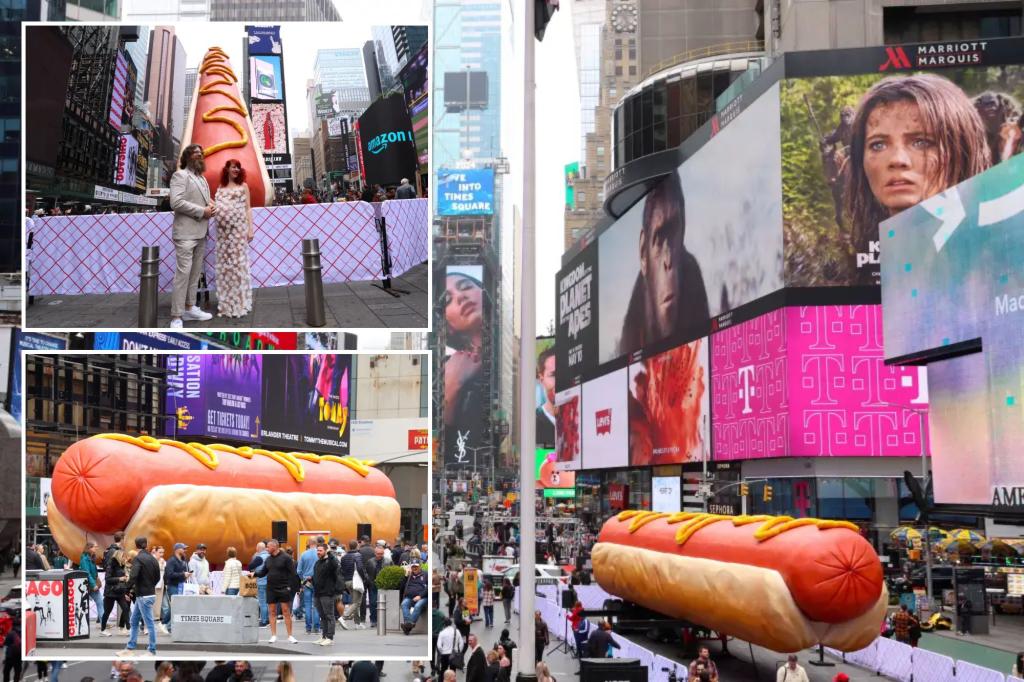In Times Square, a giant hot dog sculpture, created by Brooklyn-based artists Jen Catron and Paul Outlaw, has been making waves. The artists intended for the 65-foot sausage to serve as a commentary on consumption, capitalism, class, and contemporary culture. The sculpture, appropriately named “Hot Dog in the City,” is meant to expose the patriarchy of meat-eating. Every day at 12:30 p.m., the hot dog installation lifts off the ground and becomes a confetti cannon, symbolizing hyper-masculinity and showmanship associated with American culture. Despite its deep underlying message, the installation has been seen as an Instagram opportunity by many tourists in Times Square.
Times Square, known for its larger-than-life displays and attractions, might not be the most ideal setting for deep introspection. The presence of a massive hot dog sculpture amongst other oversized commercial entities like M&M’s World and Krispy Kreme creates an unusual juxtaposition. The sheer size of the sculpture might not have the intended impact if it were placed in a more serene environment like Central Park. Regardless of its setting, the hot dog sculpture has drawn attention for its potential commentary on American excess and consumer culture.
While the artists behind the hot dog installation may have had grand intentions to spark discussion about societal issues, many passersby simply see it as a giant hot dog. The lack of public awareness or engagement with the deeper meaning of the sculpture showcases the challenge of conveying complex messages through visual art in a busy and commercialized place like Times Square. Despite the thematic elements embedded in the sculpture, most people view it as a novelty and an opportunity for social media posts rather than a serious critique of American society.
As part of the installation, various events have been planned to further explore the themes of masculinity, corporatism, and capitalism. From wrestling matches to hot dog eating contests, the programming surrounding the hot dog sculpture adds another layer of complexity to its interpretation. The choice of panelists for a debate on the merits of hot dogs, including a feminist-vegan writer and activist, hints at the diverse perspectives that the sculpture aims to provoke. However, it remains to be seen whether these events will truly engage people in meaningful reflections on the issues at hand.
Despite the ambitious goals of the hot dog sculpture and its accompanying events, the general public’s response has been largely superficial and light-hearted. Most observers view the sculpture as a novelty and an opportunity for entertainment rather than a serious critique of contemporary society. While the artists intended to use public art as a medium for social commentary, the realities of public perception and engagement prove to be more challenging than anticipated. Overall, the giant hot dog in Times Square remains a curious attraction that sparks interest but falls short of igniting deeper conversations about societal issues.


